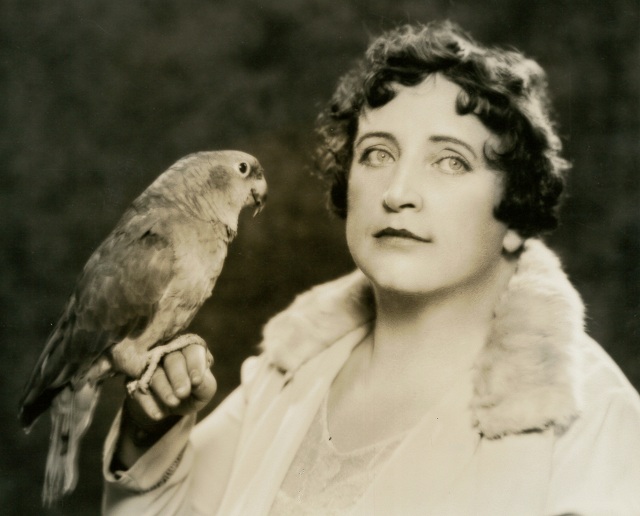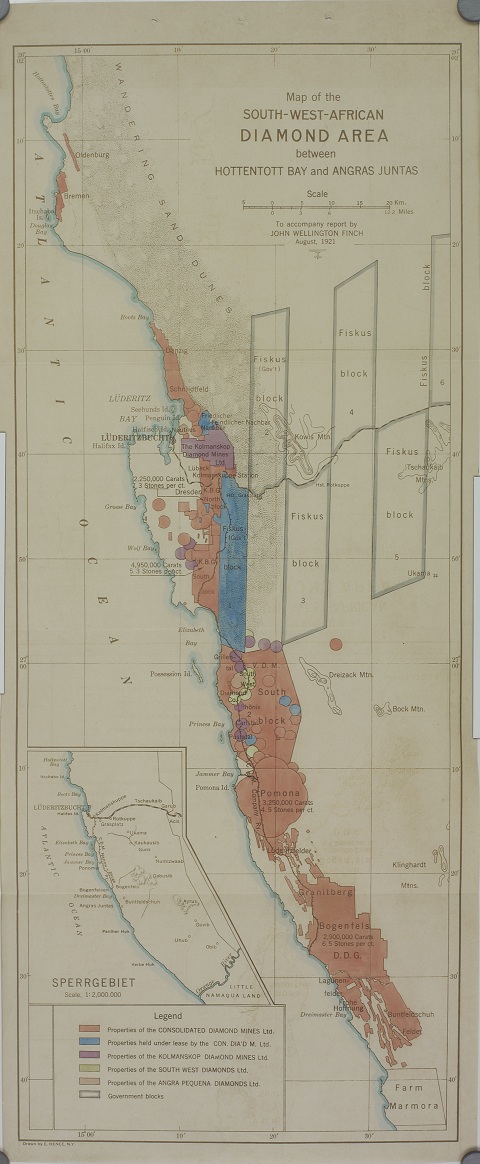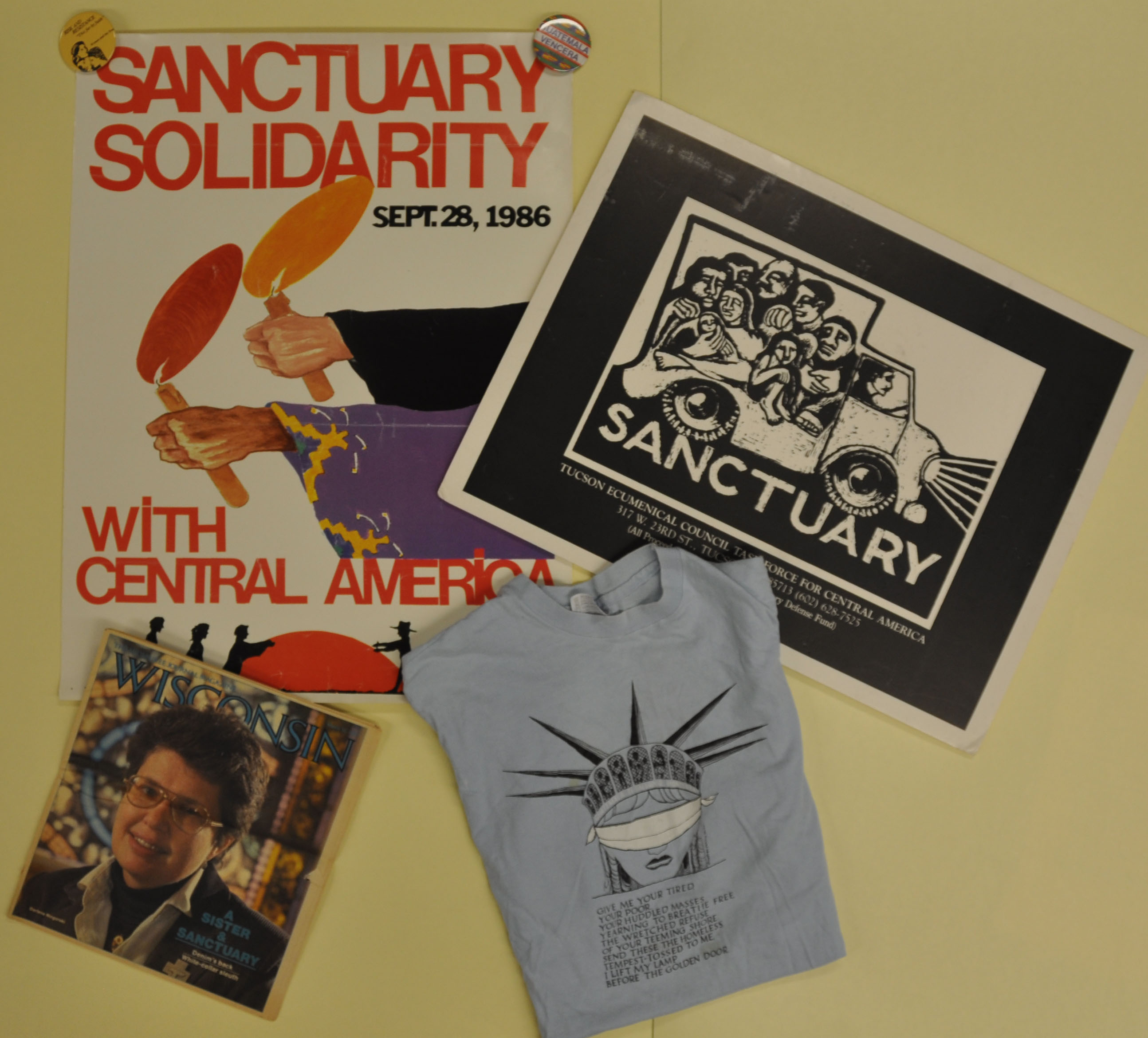
Aviation pioneer Elizabeth Lippincott (Mrs. Ulysses Grant) McQueen with her parrot, Dick, in 1937. Caption on the back, in Mrs. McQueen’s hand, “My favorite with Dick–He has an intelligent eye.” Dick was known to say “Hello girls! Can you fly? I can fly!”
Among the several collections of aviation materials held by Special Collections are the papers of Elizabeth Lippincott McQueen (1878-1958), a tireless proponent for women in aviation, and founder of the Women’s International Association of Aeronautics (WIAA).
Elizabeth Lippincott was born in New Jersey in 1878, and in 1900 married Ulysses Grant McQueen (1864-1937), a wealthy inventor and manufacturer in New York City. The couple lived in New York City until 1928, when they moved to Beverly Hills, California. During World War I, Mrs. McQueen served in war relief work in Palestine under Field Marshal Allenby. In 1919 she founded the Jerusalem News, the first English-language newspaper in Jerusalem.
Mrs. McQueen became interested in aviation when in 1920 she witnessed seven airplanes “take the place of two British regiments of soldiers” in routing a large number of rebel Arab cavalry in the desert near Aden.
A vision, mental and spiritual, came to me of millions of women with the hands upraised acclaiming: ‘Save my son from war, save my son from war, save my son from war!’ I mentally saw these women’s faces and hands upraised far into space and heard their voices entreating me. This vision has never left me. Then and there I dedicated my life to aeronautics as an instrument for World Peace.
In September 1928, Mrs. McQueen organized the Women’s Aeronautic Association of California, which was soon followed by similar organizations in New York, Arizona, New Mexico, Texas, Nevada, Oregon, Washington, Canada, England, France, Germany, Australia, and New Zealand. In May 1929, these various groups coalesced into the Women’s International Association of Aeronautics (WIAA), which became the principal focus of her activities for the rest of her life. Mrs. McQueen served as “founder and honorary president” of the WIAA; presidents of the association were, in turn, prominent British aviator Lady Mary Heath (1929-1932), British reporter Lady Grace Hay Drummond-Hay (1932-1940), educator Dr. Mary Sinclair Crawford (1940-1947), actress Mary Pickford (1947-1949), airplane manufacturing executive Olive Ann Beech (1949-1954), and pioneer aviator Matilde Moisant (1954-). A junior division of the WIAA was organized in 1931; members under 7 years old were called “tailwinds”, those from 7 through 20 years old “zoomers”.
In 1929, Mrs. McQueen and Lady Heath appealed to the Federation Aeronautique Internationale in Paris to have women’s air records recognized, an appeal that was ultimately successful. At the same time, in order to arouse greater interest in women’s flying, Mrs. McQueen conceived the idea and was one of the principal organizers of the first Women’s Air Derby from Santa Monica, California, to the 1929 National Air Races in Cleveland. 19 female aviators took part in this forerunner to the Powder Puff Derby, the winners being Louise Thaden and, in the lighter aircraft category, Phoebe Omlie.
In 1932 and 1933, Mrs. McQueen published a column, “Happy Contacts”, concerning women and aviation, in the monthly magazine Speed; she also published several articles in The Air Pilot in 1933. In July 1933, Mrs. McQueen, who in 1929 had been deputized as the first aerial policewoman in the world by Police Chief Charles Blair of Beverly Hills, organized the Women’s Aerial Police Association, whose members were deputized to assist the civil authorities in times of emergency. From March 1940 to February 1941, she also undertook a Goodwill Tour to Mexico and Central and South America, on which she publicly read a letter from Eleanor Roosevelt and met with many pioneer female flyers.
Ulysses Grant McQueen died in 1937, and about 1955 Mrs. McQueen married Dr. Irving Reed Bancroft, a prominent retired Los Angeles physician. She died at her home in Hermosa Beach, California, on December 24, 1958, aged 80, after a long period of declining health. Her ashes are interred in the Portal of the Folded Wing in Pierce Brothers Valhalla Cemetery, in North Hollywood. Although she had devoted her life to furthering the role of women in aviation, she had never obtained a pilot’s license.
The Elizabeth Lippincott McQueen Papers form a small collection, but it is particularly noteworthy for its materials relating to pioneer women aviators such as Florence Lowe “Pancho” Barnes, Alys McKey Bryant, and Evelyn “Bobbie” Trout. Additional photographs document an undated (but almost certainly 1934) gala luncheon, probably at the Del Mar Club in Santa Monica, attended by many of the leading pioneer women aviators of the day; the 1933 visit of the brothers Auguste and Jean Piccard to the University of Southern California; several breakfasts at the Los Angeles Breakfast Club, honoring, among others, Col. Roscoe Tanner, Clyde Pangborn, Thea Rasche, and Sir Charles Kingsford-Smith; the victory of Louise Thaden and Blanche Noyes in the 1936 Bendix Trophy Race; a 1949 luncheon for Mrs. Amy Otis Earhart; and many events held at the Mission Inn, Riverside, where Mrs. McQueen resided for much of the 1940s, and whose Famous Fliers Wall held a special significance to aviators of her generation. A finding aid of the full collection is available at the Online Archive of California.

